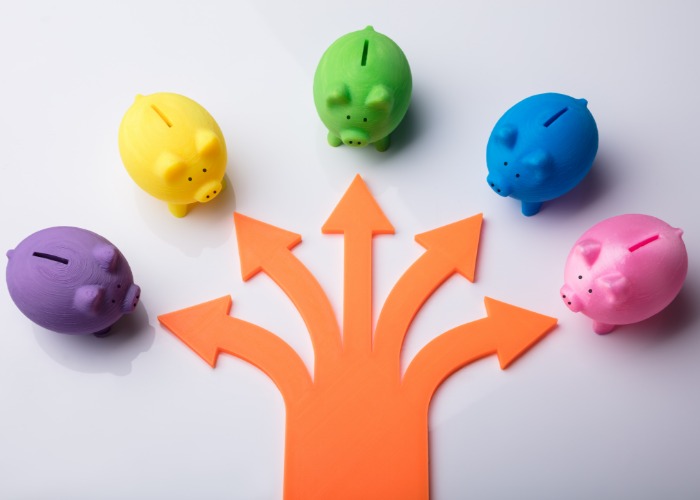Personal Savings Allowance: more savers face tax bill as rates keep rising

Savings pots with little over £8,000 could attract the taxman's attention as rates have soared in recent months.
Increasing numbers of savers are at risk of having to pay tax for the first time on the money they have squirrelled away.
The increased rates of interest on offer on savings mean that more and more savers will have to hand over a portion of the returns they enjoy to the taxman, making it all the more important that they consider precisely where they save money.
Manage all your savings accounts in one place with Raisin, the simple savings service
Earning interest tax-free
Most of us enjoy a Personal Savings Allowance each year, which sets out how much money we can earn in interest from our accounts, no matter what type of account that might be.
The size of that allowance depends on your Income Tax band.
Basic Rate taxpayers have an allowance of £1,000, which drops to £500 for Higher Rate taxpayers.
Additional rate taxpayers do not have a Personal Savings Allowance at all.
Do you have cash stashed in multiple savings accounts? Raisin lets you manage all your pots simply from one place. Click here to learn more.
The return of the ISA
The selling point of ISAs has always been that you get to keep every penny of the interest earned, without the taxman taking a slice.
In recent years, that has become a less compelling pitch, however.
The combination of the Personal Savings Allowance and the paltry interest rates on offer has meant that very few savers were able to earn sufficient interest from their savings to even be eligible for paying tax on the returns.
Given that, savers have had less reason to worry about whether they are putting their cash into an ISA or a traditional savings account ‒ the only real consideration was the interest rate on offer.
That is changing now, though, with the sharp increase in interest rates on savings deals.
How much can I have in savings before paying tax?
It's remarkable to think that, 19 months ago, the Bank Base Rate stood at just 0.1%.
Since then, we have had a succession of increases, with Base Rate hitting 5% last month.
And as Base Rate has risen, so too have the rates of interest paid on savings accounts, allowing savers to enjoy a better return on the money they have set aside.
That’s obviously a good thing, but it does mean that savers can have far less in their savings pots before they start having to hand some of those returns to the taxman.
For example, back in December 2021, the best easy access account around paid a rate of 0.65%.
As a result, Basic Rate taxpayers would need to have a monster £154,000 in the account before hitting their Personal Savings Allowance limit, while Higher Rate taxpayers would need to have £77,000.
However, the best rate available on such an account today is 4.35% from Tandem Bank, meaning Basic Rate taxpayers will have to start paying tax on returns once more than £23,000 set aside, dropping to £11,500 for Higher Rate taxpayers.
The situation is even more pronounced when you consider fixed-rate savings deals, which pay higher rates of interest.
The very best rate available at present is from First Save, with its 2-Year Fixed Term Deposit offering a rate of 6.15%.
On this account, Basic Rate taxpayers will start paying tax on returns once they have more than £16,250 set aside, while Higher Rate taxpayers will have to cough up once they have saved £8,125.
When you consider the average amount held in savings in the UK is £7,509 (according to a 2022 survey by comparison site Finder), it's clear there will be a fair few savers with best buy accounts facing a tax bill for the first time in years.
The importance of ISAs
It’s no bad thing that savers are able to pocket better returns, even with the added consideration of the Personal Savings Allowance being used up.
However, it does make it all the more essential that savers make use of as much of their ISA allowance as possible so that they can be sure that they enjoy the biggest returns on their savings.
Check out our guide to the various types of ISA available, so that you can determine the best ISA for your circumstances.
Comments
Be the first to comment
Do you want to comment on this article? You need to be signed in for this feature